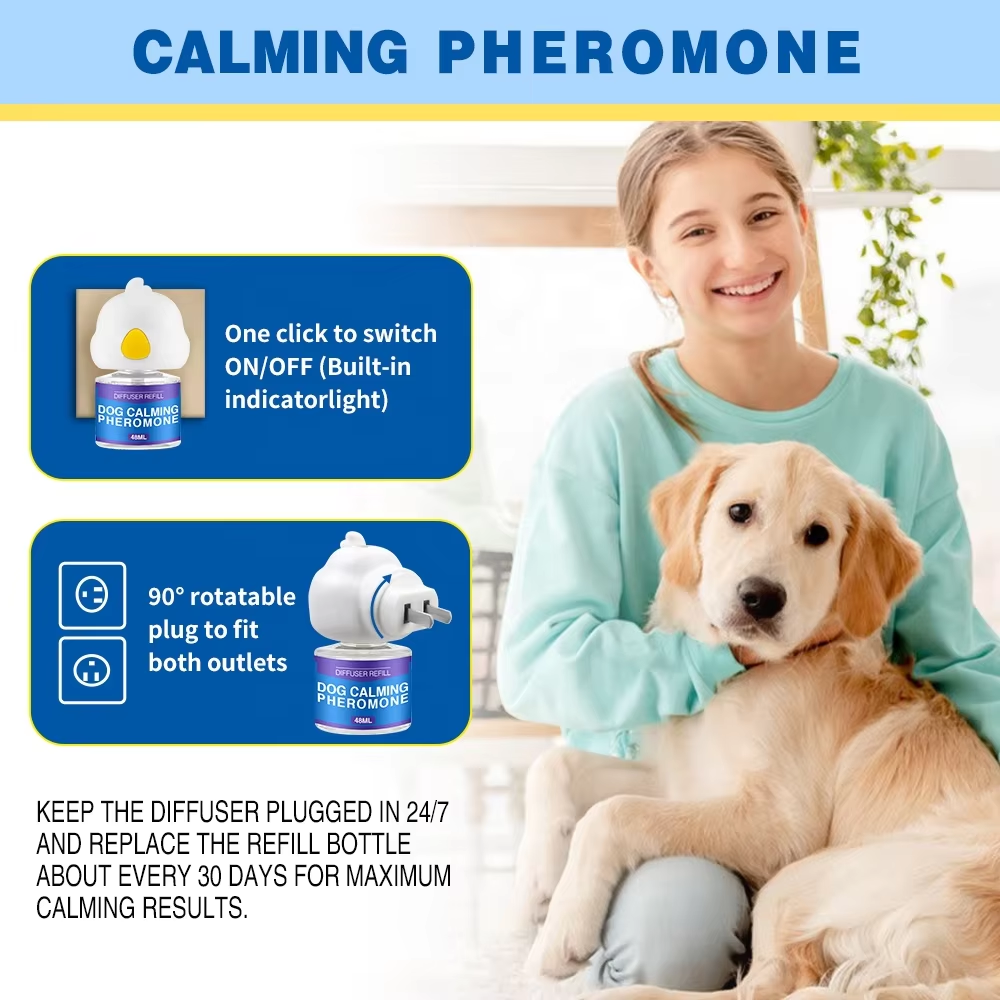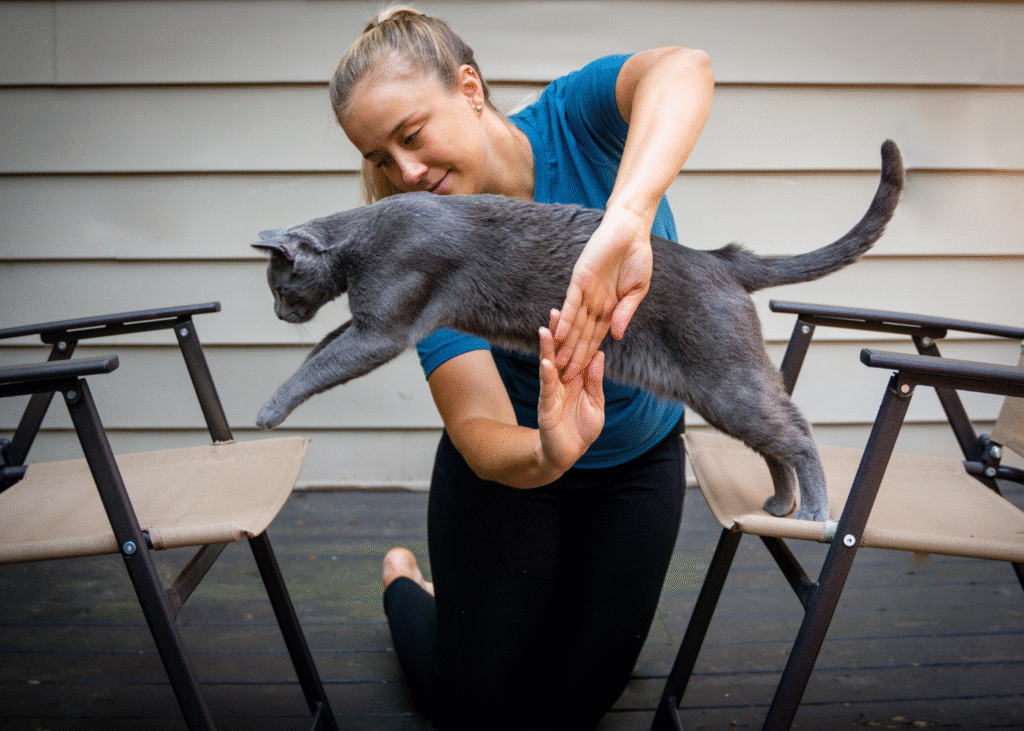Anxiety is more prevalent in pets than many realize—impacting dogs, cats, rabbits, and even birds. It can stem from separation, fear, medical issues, or change. Untreated, anxiety can lead to behavioral and health challenges. In this ultimate guide, we explore:
- What causes anxiety across species
- The subtle and overt signs to watch for
- Practical, science-backed, non-invasive solutions
- How to create an anxiety-friendly environment at home

1. Why Pet Anxiety Matters
Anxiety in pets isn’t just “quirky behavior”—it can seriously affect well-being. Chronic stress weakens immune function, affects appetite, increases injury risk, and strains the human-animal bond. Recognizing and addressing anxiety early prevents long-term consequences and improves both your life and your pet’s.
2. Major Causes of Anxiety in Pets
2.1 Separation Anxiety
Common in dogs, but known in cats and birds too:
- Signs: Pacing, destructive behaviors, vocalizing, house soiling.
- Causes: Recent adoption, changes in living situations, overly attached behavior.
2.2 Fear of Noises & Environments
Noises like fireworks, thunderstorms, vacuum cleaners can trigger:
- Behavioral signs: Trembling, hiding, panting, running away.
- Prevention: Gradual desensitization using recorded sounds and positive associations.
2.3 Lack of Routine / Predictability
Pets thrive on consistency. Without routine:
- Signs: Restlessness, appetite shifts, increased vocalizing.
- Tip: Structured schedules foster security.
2.4 Traumatic Experiences or Medical Conditions
Past trauma (abuse, accidents) or conditions like arthritis, thyroid issues can contribute:
- Watch for: Sudden aggression or changes in elimination habits.
- Consultation: Always rule out medical causes first with a vet check-up.
2.5 Changes in Household
New pets, babies, visitors, relocation—any change can unsettle pets:
- Signs: Withdrawal, clinginess, marking territory.

3. Recognizing Signs of Anxiety (≈800 words)
3.1 Body Language & Physical Signs
- Panting, drooling, trembling
- Ears held back, tail tucked
- Pacing, inability to settle
3.2 Vocalizations & Attention-Seeking
- Excessive meowing, whining, barking
- Destructive behaviors or house soiling
3.3 Appetite & Elimination Changes
- Loss of appetite or snacking out of stress
- Urinating/defecating in the house
3.4 Over-Grooming & Self-Harm
- Bald patches, sores, skin infections, fur pulling
3.5 Aggression & Reactivity
- Growling, hissing, snapping due to stress
3.6 Hiding & Avoidance
- Retreating to small spaces, refusing interaction

4. Assessing the Severity of Anxiety (~500 words)
Not all anxiety requires drastic interventions. You can gauge severity by:
| Level | Signs | Approach |
|---|---|---|
| Mild | Occasional whining, restlessness | Routine improvements, mild enrichment |
| Moderate | Frequent hiding, vocalizing | Structured training, soothing tools |
| Severe | Destructive behavior, self-injury | Vet consult, behaviorist, possible medication |
Medical evaluation is essential before behavior programs.

5. Soothing Solutions You Can Try
5.1 Environmental Enrichment & Predictability
- Structured daily routine: feeding, walks, playtime at consistent times
- Safe zones: crate, ACE (animal-comfort-enclosing) dens, covered beds
- Background white noise: fans, classical music, or “Through a Dog’s Ear” audio
5.2 Desensitization & Counter-Conditioning
Step-by-step training to overcome fears (e.g., storms, car rides):
- Introduce recordings at low volume
- Pair with high-value treats and positive experiences
- Incrementally increase exposure and praise
5.3 Comfort Measures & Tools
- Thundershirt or anxiety wrap
- Pheromone diffusers (Adaptil for dogs, Feliway for cats)
- Calming collars and sprays
- Interactive feeders to reduce stress and boredom
5.4 Nutrition & Supplements
- Calming diets with tryptophan, L-theanine, DHA
- Vet-formulated supplements like fish oil, Zylkene
- CBD oils—consult your vet for dosage and safety
5.5 Positive Reinforcement Training
Teach coping behaviors:
- “Place” or “mat” training for calm retreat
- “Check-in” cues for reassurance
- Reward calm behaviors with treats and praise
5.6 Exercise & Mental Stimulation
- Daily walks, runs, training sessions
- Enrichment toys, scent games, food puzzles
- Regular socialization opportunities

6. When to Seek Help: Vet & Behaviorist Pathways
6.1 Veterinary Consultation
- Rule out medical stressors
- Discuss anxiety-tailored meds (SSRIs, trazodone, gabapentin)
6.2 Certified Behaviorists & Trainers
- CPDT-KA trainers or CABF behaviorists
- Customized plans with science-backed methods
- Plans include structured desensitization and training
6.3 Support Groups & Online Resources
- Community forums, rehab classes, and mentoring programs aid behavior change

7. Real-World Case Studies
Case 1: Rocky the Fearful Pup
Rescued dog terrified of storms. Weekly sessions and cozy comfort zone training helped calm him to near-normal calm.
Case 2: Luna the Over-Grooming Cat
Luna chewed her paws until hurt. Vet-approved dietary supplements, pheromones, and enrichment toys cured her habit in 6 weeks.
Case 3: Bella the Separation-Anxious Rabbit
Bella’s destructive chewing improved with rabbit-safe TV, hidey-huts, and daily handling training.

8. Long-Term Strategies to Maintain Calm
- Reassess routines and triggers every few months
- Practice periodic “stress drills” (playing recording of vacuum at low volume)
- Rotate toys and stimuli to fight habituation
- Celebrate small wins—use growth-tracking logs
- In multi-pet homes, ensure each animal has its own safe zone

9. Resources for PetHouseTop1 Readers
- Downloadable PDF: “Pet Anxiety Care Plan”
- Links to guided meditation music for dogs
- Recommended reading: “Decoding Your Dog” and “Think Like a Cat”
- Vet and behaviorist directory links by region
10. Conclusion: Compassion, Consistency & Hope
Solving anxiety isn’t instant—but with patience and love, most pets thrive again. Small routine changes, structured training, and sometimes professional support can transform your anxious pet into a confident companion. You don’t have to go it alone—share your journey with fellow PethouseTop1 readers and champion the courage it takes to help anxious pets.
